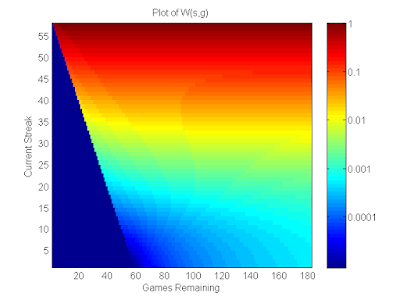Counting Coprime Pairs Using Inclusion Exclusion
The principle of inclusion exclusion is a very powerful idea that can be used to solve alot of problems that arise in combinatorics. In this blog post, I will show how it can be used to solve one problem in particular, and I will also provide a very elegant recursive implementation of it.
Let's say we want to count the number of positive integers \( k \) that are less than or equal to \( m \) and relatively prime to \( n \). Using set theoretic notation, week seek to find the cardinality of the set \( \{ p \mid p \in \{ 1, 2, \dots, m \}, \gcd(n,p) == 1 \} \) where \( gcd \) is the greatest common divisor function. Let's denote the function that
counts the cardinality of this set as \( f(n,m) \).
Now that the problem has been defined, I will show how to solve it using brute force methods. We can map the mathematical definition of the problem to a haskell program very naturally using a list comprehension.
f :: Int -> Int -> Int
f n m = length [p | p <- [1..m], gcd n p == 1]
cabal install arithmoi. This package provides a bunch of cool number theory functions. I will be using their function factorise :: Integer -> [(Integer, Int)] which produces the list of prime factors and associated multiplicities of a given number.
import Math.NumberTheory.Primes
factors :: Integer -> [Integer]
factors = map fst . factorise
g :: [Integer] -> Integer -> Integer
g [] m = m
g (p:ps) m = g ps m - g ps (m `div` p)
f :: Integer -> Integer -> Integer
f n m = g (factors n) m

This information proves to be valuable and insightful, offering a comprehensive understanding of the topic. It has significantly enriched my knowledge by providing a wealth of information on the subject.
ReplyDeletethe best english teacher and tutor in pune